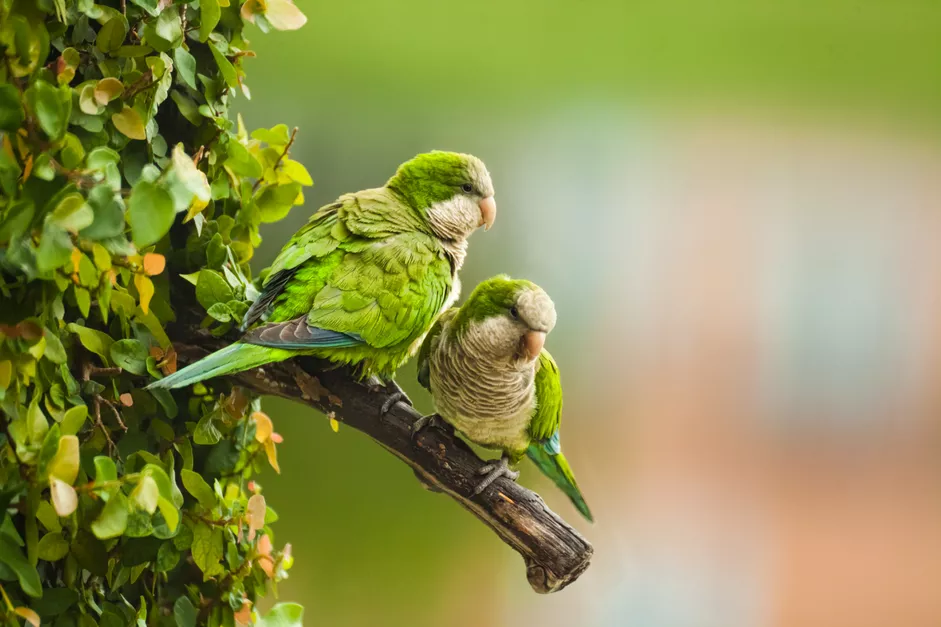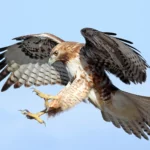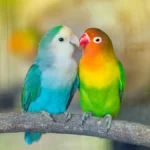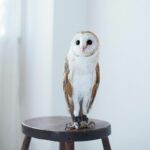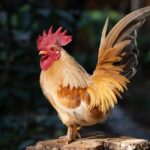Many people are inspired to get a pet bird after learning that some species can mimic human speech or perform a feat.
While some bird species are better suited to language than others, it is impossible for any bird to acquire language skills without significant exposure to human interaction and the repetition of words and phrases.
Here are the eight most promising species of talking birds to choose from if you want a feathery friend that can imitate your voice.
11. Budgerigar
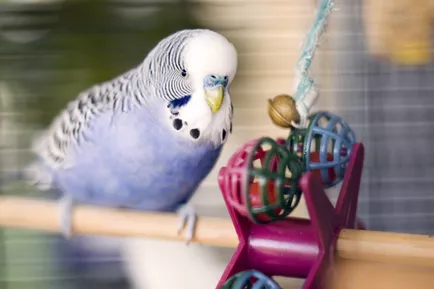
The budgerigar, sometimes known as a parakeet, can hold its own in a conversation with any larger bird.
Indeed, budgies have the biggest vocabulary of any known species of bird.
Although their vocals can be described as gravelly, budgies have the potential to learn a wide variety of human languages and phrases.
As a result of their sociable nature, many parrots love having conversations with their keepers.
- LENGTH: 6 to 8 inches
- WEIGHT: 1 ounce
- PHYSICAL CHARACTERISTICS: Green abdomen; black and yellow back; yellow head; dark blue tail; mutations include blue, yellow, white, and gray
10. Indian Ringneck Parakeet
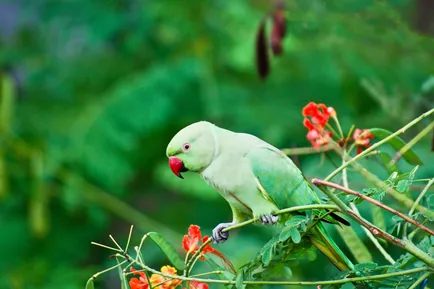
It appears that Indian ringneck parakeets can also pick up lengthier phrases in addition to individual words. Usually, their words are easy to understand.
Hundreds of years ago in India, religious authorities who prayed in their gardens noticed that local ringnecks were reciting the prayers after them.
Because of this, people began treating the birds with reverence and eventually began keeping them as pets.
- LENGTH: 14 to 17 inches
- WEIGHT: 4 ounces
- PHYSICAL CHARACTERISTICS: Green plumage; blue tail; yellow underwings; males have black and rose rings around their necks
9. Quaker Parrot
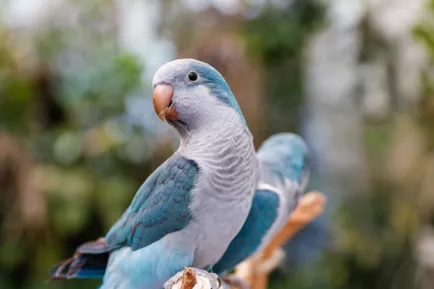
If you’re interested in adopting a Quaker parrot, also known as a monk parakeet, make sure to research the rules in your area first.
Quakers have a high capacity for social interaction and a rapid capacity for learning the language of humans.
Because of how quickly they pick up on new information, these birds are a favorite among first-time parrot trainers.
- LENGTH: 11 to 12 inches
- WEIGHT: 3 to 5 ounces
- PHYSICAL CHARACTERISTICS: Greenhead, wings, and body; gray breast, cheeks, and throat; blue flight feathers; mutations include blue, albino, cinnamon, lutino, and pied
8. African Grey
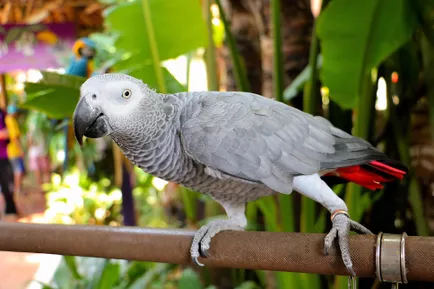
Some African greys have amassed vocabulary sizes in the hundreds of words, earning them the title of “best talking bird.”
Some studies even imply that these parrots can hold basic conversations using a limited vocabulary and familiar contexts; nevertheless, this does not prove that they understand what they are saying.
Regardless, years of diligent preparation and practice are required for this form of verbalization.
- LENGTH: 9 to 14 inches
- WEIGHT: 11 to 19 ounces
- PHYSICAL CHARACTERISTICS: Mostly gray plumage with pale edging; black beak and bright red tail (Congo African grey); tan upper beak and maroon tail (Timneh African grey)
7. Amazon Parrot
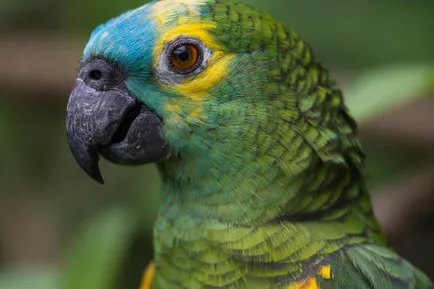
Most Amazon parrots have very pleasant voices and many may be trained to speak with remarkable clarity.
They may be drawn to human behaviour because of an instinctive desire to connect with others.
Intelligent and lively, these birds enjoy being the focus of attention.
They form strong attachments to their caretakers and need lots of attention and space to run around in.
- LENGTH: 15 to 17 inches
- WEIGHT: 16 to 23 ounces
- PHYSICAL CHARACTERISTICS: Green body; yellow head; red at the wing bend; tan beak; white rings around the eyes (double yellow-headed Amazon)
6. Eclectus
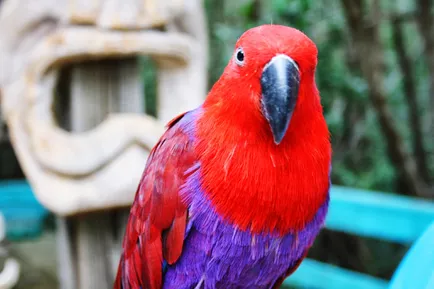
Eclectus parrots aren’t known for their loudness, yet they can learn a large number of words from humans.
In general, these birds are docile and calm, and they respond positively to interaction with their keepers.
It has been suggested that training a male Eclectus is easier, while a female is more self-reliant and resilient to stress because of this.
- LENGTH: 17 to 20 inches
- WEIGHT: 13 to 19 ounces
- PHYSICAL CHARACTERISTICS: Primarily emerald green, red and blue underwings, and orange beak (male); primarily bright red, blue on chest and tail, and black beak (female)
5. Cockatoo
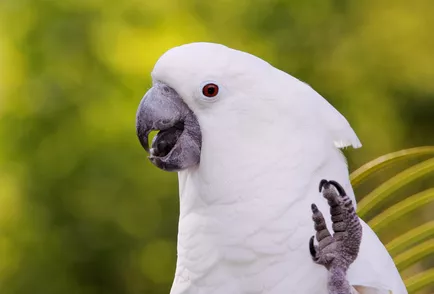
Cockatoos can learn a few words and phrases, however they aren’t particularly good talkers.
Caregivers should prepare to spend numerous hours each day interacting with their birds because of how social and affectionate they are, even to the point of being needy.
Because of their close relationship with their owners, cockatoos are willing to learn new skills from them, including how to speak.
- LENGTH: 18 inches
- WEIGHT: 16 to 26 ounces
- PHYSICAL CHARACTERISTICS: Primarily white plumage; pale yellow on wings and tail; large white crest; black beak (umbrella cockatoo)
4. Macaw
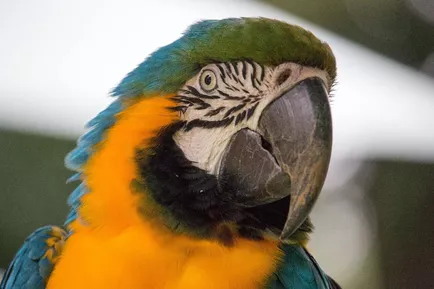
Macaws, like cockatoos, aren’t as talkative as other parrots, but they can nevertheless mimic human speech.
The blue-and-gold macaw is one species that has proven to have a natural knack for picking up language.
Despite their muddled vocalisations, macaws are loud birds.
So be prepared for a bird that will communicate nonstop in your ear, but it may not always speak a language you can comprehend.
- LENGTH: 30 to 36 inches
- WEIGHT: 28 to 46 ounces
- PHYSICAL CHARACTERISTICS: Green forehead fading into teal on the nape, back, tail, and wings; yellow chest and underside of wings; large black beak (blue-and-gold macaw)
3. Senegal Parrot
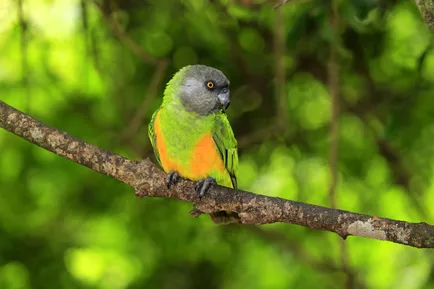
The Senegal parrot, which originated in Africa, is a friendly pet that enjoys interacting with people.
If you’re thinking of getting a bird of this species, you should set aside a significant amount of time each day to spend with it.
Birds of this species are typically quieter and less boisterous than those of other parrot species, although they can be trained to mimic human speech and other noises.
- LENGTH: 10 inches
- WEIGHT: 4 to 5 ounces
- PHYSICAL CHARACTERISTICS: Gray head; green wings and chest; V-shaped patch of a red to yellow color on the belly
2. Blue-Crowned Conure
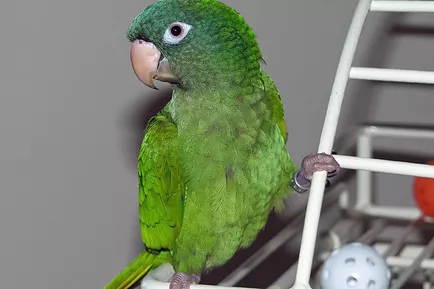
A blue-crowned conure is another option for a medium-sized talking bird.
Conures aren’t the best talkers and would rather imitate things like an alarm clock’s beeping.
In contrast, the blue-crowned conure can be taught multiple words and phrases with consistent exposure to the language.
Because of its loud shrieking, this bird is not a good choice for apartment life.
- LENGTH: 15 inches
- WEIGHT: 3 to 6 ounces
- PHYSICAL CHARACTERISTICS: Bright blue head; green body; reddish tail tip; pink legs; tan beak; white rings around eyes
1. Derbyan Parakeet
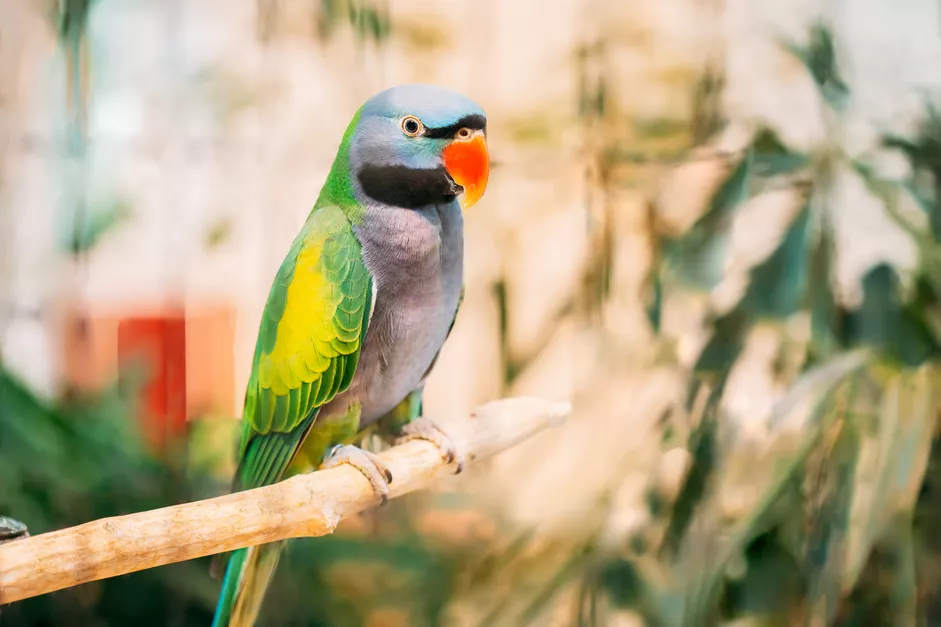
One of the largest and rarest parakeets is the Derbyan.
When compared to a ring-necked parakeet, it is nearly the same size as an Alexandrine parakeet, which is twice as big.
It’s not terrible for conversation but not great either. Adult parrots display clear sexual dimorphism.
The beaks of males are reddish-orange, whereas those of females are black.
The bird is energetic, noisy, and difficult to teach, yet it doesn’t have much of a bite.
They need a lot of time spent interacting with others.
- Species: Psittacula derbiana
- Another name: Lord Derby’s parakeet
- Vocabulary: 20-40 words
- Lifespan: 20-30 years
